‘Greenhouse gases’ are crucial to keeping our planet at a suitable temperature for life. Without the natural greenhouse effect, the heat emitted by the Earth would simply pass outwards from the Earth’s surface into space and the Earth would have an average temperature of about -20°C.
Greenhouse gases
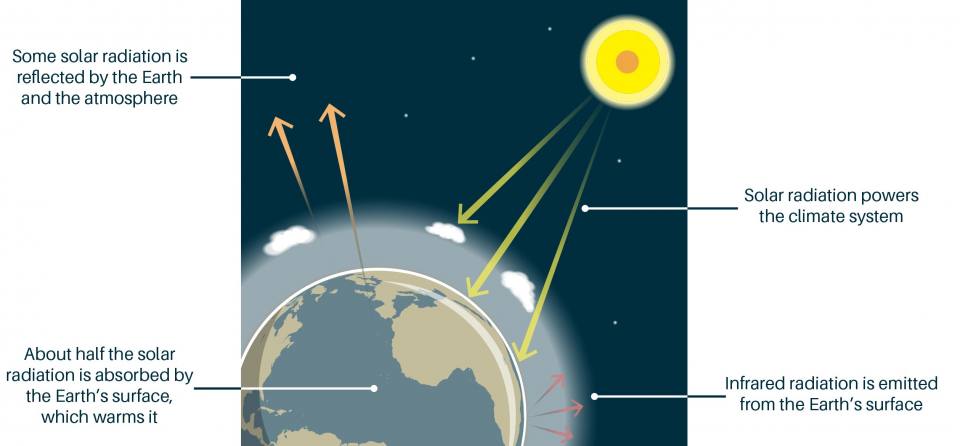
The greenhouse effect: some of the infrared radiation from the Sun passes through the atmosphere, but most is absorbed and re-emitted in all directions by greenhouse gas molecules and clouds. The effect of this is to warm the Earth’s surface and the lower atmosphere. BGS © UKRI.
A greenhouse gas is called that because it absorbs infrared radiation from the Sun in the form of heat, which is circulated in the atmosphere and eventually lost to space. Greenhouse gases also increase the rate at which the atmosphere can absorb short-wave radiation from the Sun, but this has a much weaker effect on global temperatures.
The CO2 released from the burning of fossil fuels is accumulating as an insulating blanket around the Earth, trapping more of the Sun’s heat in our atmosphere. Actions carried out by humans are called anthropogenic actions; the anthropogenic release of CO2 contributes to the current enhanced greenhouse effect.
Which gases cause the greenhouse effect?
The contribution that a greenhouse gas makes to the greenhouse effect depends on how much heat it absorbs, how much it re-radiates and how much of it is in the atmosphere.
In descending order, the gases that contribute most to the Earth’s greenhouse effect are:
- water vapour (H2O)
- carbon dioxide (CO2)
- nitrous oxide(N2O)
- methane (CH4)
- ozone (O3)
In terms of the amount of heat these gases can absorb and re-radiate (known as their global warming potential or GWP), CH4 is 23 times more effective and N2O is 296 times more effective than CO2. However, there is much more CO2 in the Earth’s atmosphere than there is CH4 or N2O.
Not all the greenhouse gas that we emit to the atmosphere remains there indefinitely. For example, the amount of CO2 in the atmosphere and the amount of CO2 dissolved in surface waters of the oceans stay in equilibrium, because the air and water mix well at the sea surface. When we add more CO2 to the atmosphere, a proportion of it dissolves into the oceans.
Anthropogenic greenhouse gases
Since the start of the Industrial Revolution in the mid-18th century, human activities have greatly increased the concentrations of greenhouse gases in the atmosphere. Consequently, measured atmospheric concentrations of CO2 are many times higher than pre-industrial levels.
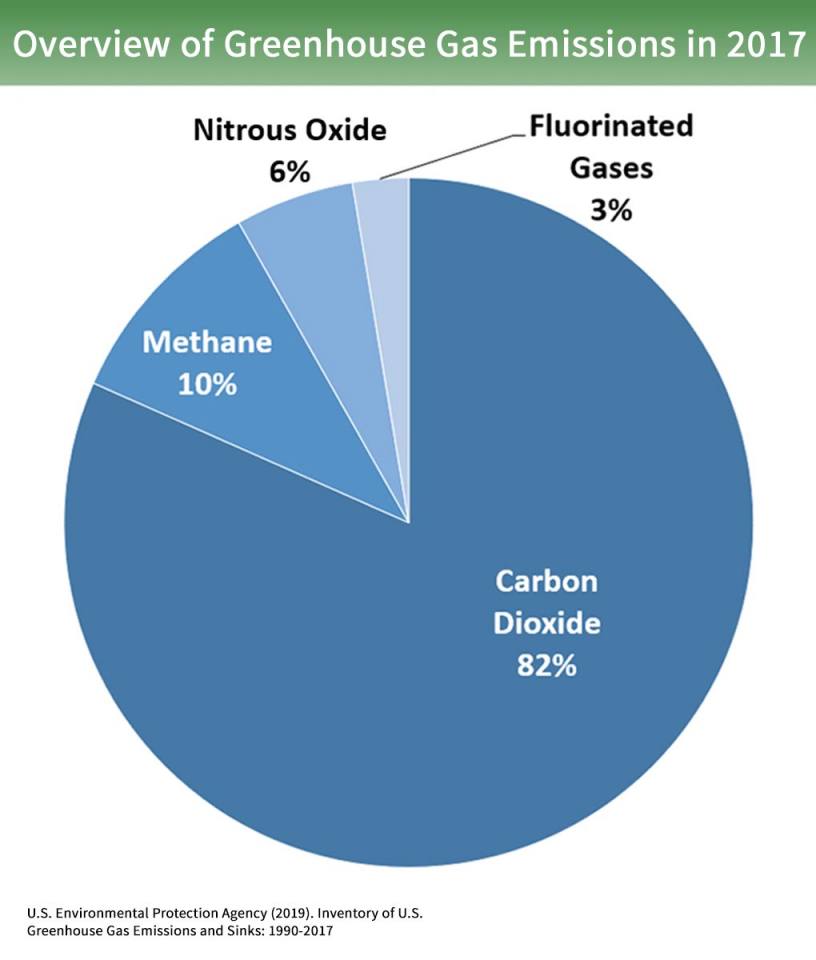
Overview of global anthropogenic greenhouse gas emissions in 2017; figures here are expressed in CO2-equivalents. Inventory of U.S. Greenhouse Gas Emissions and Sinks 1990-2015 (EPA, 2017).
Main sources of anthropogenic greenhouse gases
Carbon dioxide levels are substantially higher now than at any time in the last 750 000 years. The burning of fossil fuels has elevated CO2 levels from an atmospheric concentration of approximately 280 parts per million (ppm) in pre-industrial times to over 400 ppm in 2018. This is a 40 per cent increase since the start of the Industrial Revolution.
CO2 concentrations are increasing at a rate of about 2–3 ppm/year and are expected to exceed 900 ppm by the end of the 21st century.
If this continues, together with rising emissions of CH4 and other greenhouse gases, by 2100 the global average surface temperature could have increased by up to 4.8°C compared to pre-industrial levels. Consequently, some scientists suggest goals to limit concentrations to keep temperature change below +2°C. This would include substantial cuts in anthropogenic greenhouse gas emissions by the middle of the 21st century through large-scale changes in energy systems and land use.
In 2010, the burning of coal, natural gas and oil for electricity and heat was the largest single source of global greenhouse gas emissions (25 per cent). By comparison, in 2010, 14 per cent of global greenhouse gas emissions came from fossil fuels burned for road, rail, air and marine transportation.
Agriculture, deforestation and other changes in land use account for one quarter of net anthropogenic greenhouse gas emissions. According to a United Nations report, livestock is responsible for about 14.5 per cent of this. The main sources of emissions are:
- feed production and processing (45 per cent)
- outputs of greenhouse gases during digestion by cows (39 per cent)
- manure decomposition (10 per cent
The rest is attributable to the processing and transportation of animal products.
Higher concentrations of atmospheric CH4 are also caused by changes in land and wetland use, pipeline losses and landfill emissions. The use of fertilisers can also lead to higher N2O concentrations.
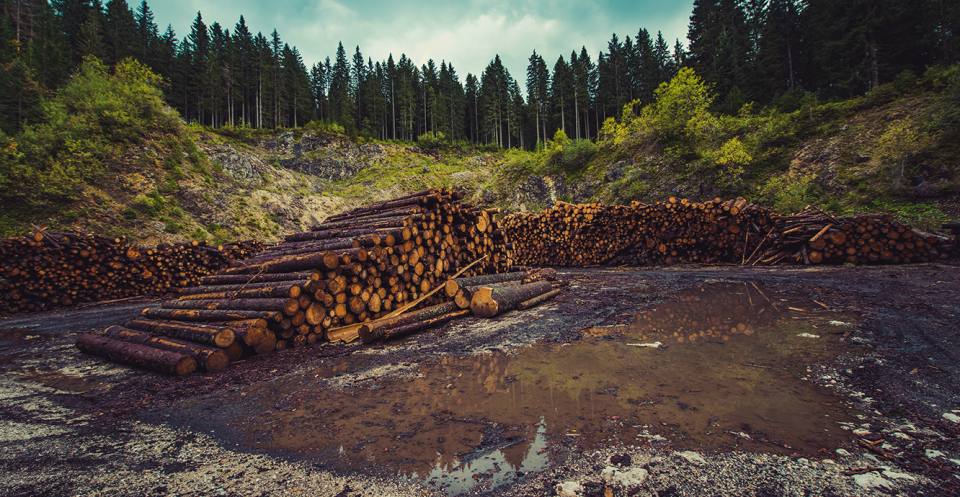
Agriculture is estimated to be the main driver for around 80 per cent of deforestation worldwide. Source: Pixabay.
Cement manufacture contributes CO2 to the atmosphere when calcium carbonate is heated, producing lime and CO2.
Estimates vary, but it is widely accepted that the cement industry produces between five and eight per cent of global anthropogenic CO2 emissions, of which 50 per cent is produced from the chemical process itself and 40 per cent from burning fuel to power that process. The amount of CO2 emitted by the cement industry is more than 900 kg of CO2 for every 1000 kg of cement produced.
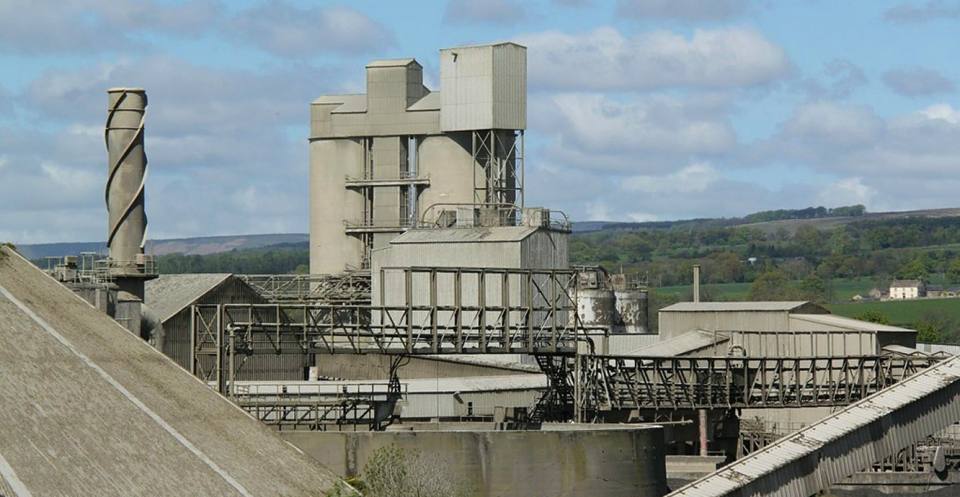
Aerosols are small particles suspended in the atmosphere that can be produced when we burn fossil fuels. Other anthropogenic sources of aerosols include pollution from cars and factories, chlorofluorocarbons (CFCs) used in refrigeration systems and CFCs and halons used in fire suppression systems and manufacturing processes. Aerosols can also be produced naturally from a number of natural processes e.g. forest fires, volcanoes and isoprene emitted from plants.
We know that greenhouse gases provide a warming effect to Earth’s surface, but aerosol pollution in the atmosphere can counteract this warming effect. For example, sulphate aerosols from fossil fuel combustion exert a cooling influence by reducing the amount of sunlight that reaches the Earth.
Aerosols also have a detrimental impact on human health and affect other parts of the climate system, such as rainfall.
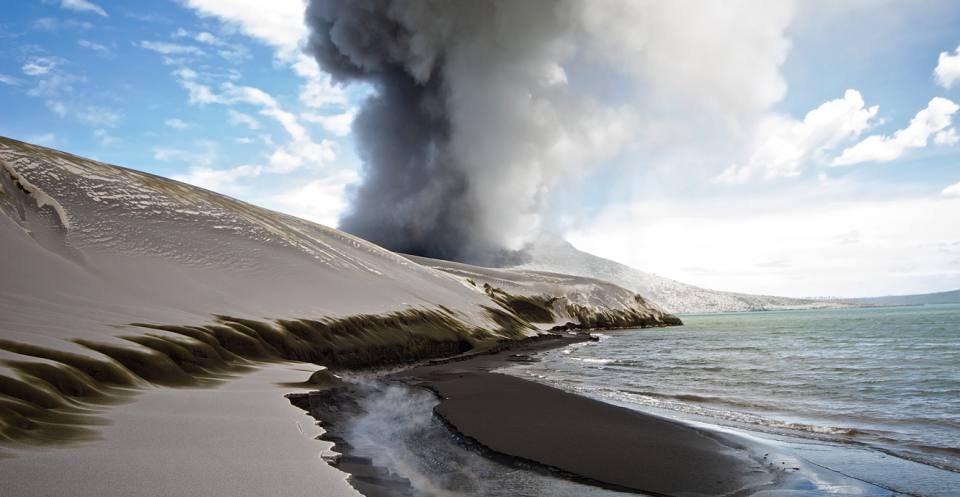
You may also be interested in

Discovering Geology
Discovering Geology introduces a range of geoscience topics to school-age students and learners of all ages.
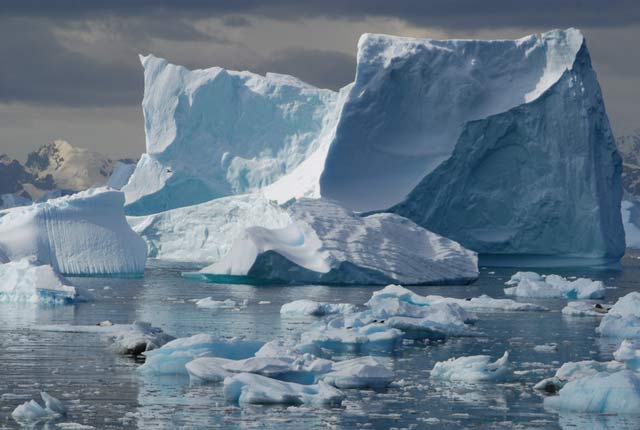
Discovering Geology: climate change
What is the difference between weather and climate? what causes the Earth’s climate to change and what are the impacts? Find out more with our Discovery Geology climate change resources.
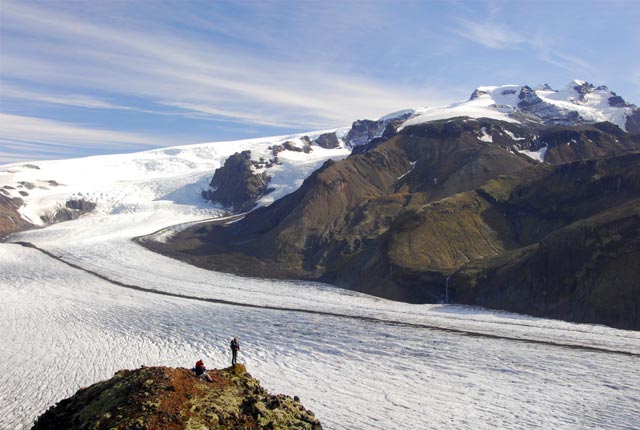
What causes the Earth’s climate to change?
Geological records demonstrate that there have been a number of large variations in Earth’s climate in the past.
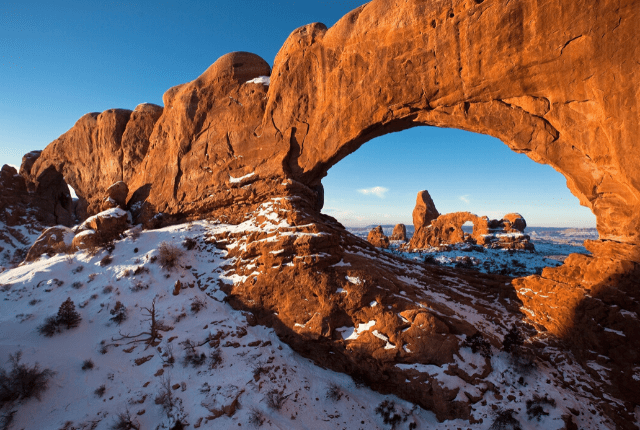
Impacts of climate change
Temperature rises can affect agriculture, sea levels and the frequency of extreme weather incidents. We can study past climate change by looking at the evidence in rocks, fossils and changes in the landscape.
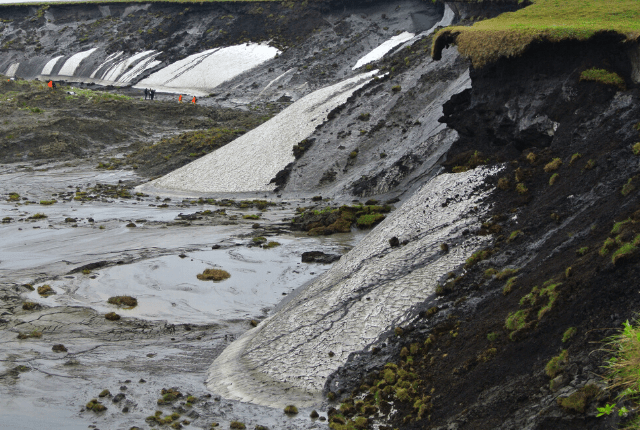
The carbon story
The carbon cycle describes the process in which carbon atoms continually travel from the atmosphere into the Earth, then released back into the atmosphere.
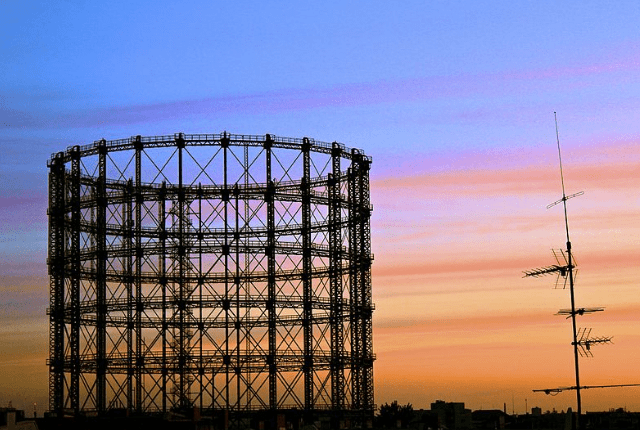
Understanding carbon capture and storage
Carbon capture and storage involves capturing carbon dioxide at emission sources, such as power stations, then transporting and storing it underground.
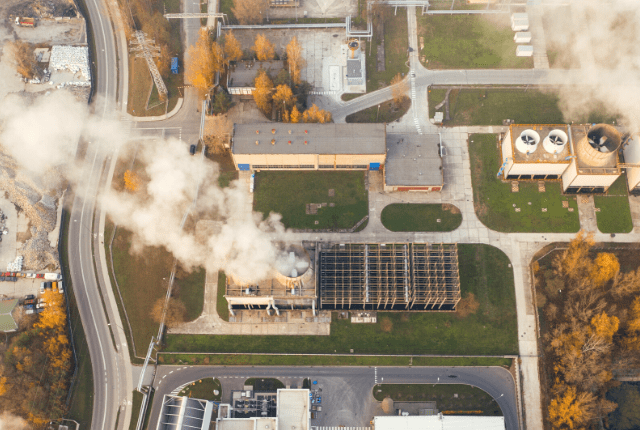
What are we doing about climate change?
BGS is committed to research aimed at slowing down the effects of a changing climate, whilst helping society to become resilient to climate change.
Footnotes
1. Enhanced Greenhouse effect
'Greenhouse gases' are actually crucial to keeping our planet at a habitable temperature, without them the Earth would be about minus 17 degrees! Anthropogenic or human release of carbon dioxide is what is contributing to an additional or enhanced greenhouse effect.



